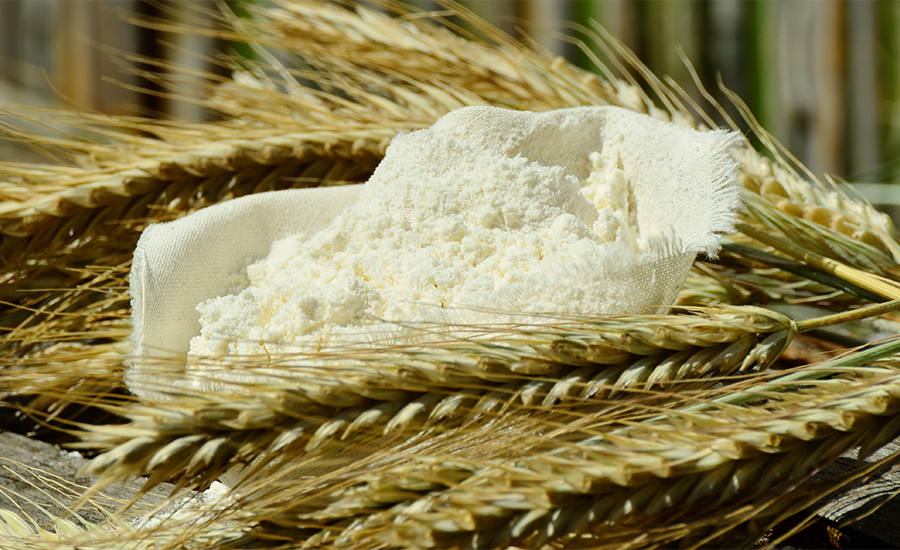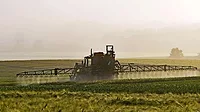Glyphosate poses new worries as off-label usage causes food contamination
Usage on farms and detected levels in food are causing concern, but not with some farming lobby groups

Besides its use as an herbicide, Glyphosate is also applied “off-label” as a drying agent or desiccant, so even non-GMO foods can contain trace levels of the chemical. Just how much is dangerous to human health is open to question. Photo courtesy of Getty Images/fotokostic
A recent study by the Detox Project—a toxic chemical research organization—revealed residual levels of glyphosate in common foods, but asked what levels, if any, are safe in terms of carcinogens. The report indicates that while more research needs to be done on this subject, regulatory bodies should seriously consider its findings.
California’s Prop 65 requires warning statements to be included on the label of chemical products such as pesticides and herbicides if they contain dangerous or carcinogenic ingredients. But the application of this California regulation has come into question as several farmers and their associations have cried foul, as saying state governments should not be allowed to require warning labels on pesticide products, but instead should be covered by the EPA.
The above two issues are related, but for unexpected reasons.
FE looked at the Detox Project’s work concerning glyphosate maximum residual levels (MRLs) in common foods in a 2017 article. It showed that regulatory bodies in the U.S. commonly allowed more MRLs of glyphosate, metabolites and degradates in foods than their European counterparts. In 2019, we looked at the EPA’s stance on glyphosate in terms of its effects on those who are exposed to it in farming practices—and briefly looked at the FDA’s guidance on MRLs of glyphosate in foods as ranging from 0.1 to 310 ppm (1,000-31,000 ppb). Therefore, if a well-known cereal tests positive for glyphosate at 833 ppb, it is still under the FDA sanctioned safe level of 0.1 ppm.
One whole-wheat sandwich bread contained 1,040 ppb of glyphosate—and the highest level recorded (1,150 ppb) in another whole wheat bread brand.
What the Detox Project found in 2022
In its first report nearly five years ago, the Detox Project found disturbing levels of glyphosate residues in 29 best-selling foods from major companies in the U.S. as increases in the spraying of toxic pesticides was skyrocketing across rural America. In this year’s report entitled, “Glyphosate Contamination: The Poison in our Daily Bread,” the Detox Project in its residue testing found 83 foods sold in major big box, grocery and natural food stores containing “alarming levels of glyphosate.” [1]
A total of 45 foods out of 86 products contained levels of glyphosate, ranging from 12 ppb in one type of sprouted wholegrain bread to as high as 889 ppb in store-brand chickpeas. One whole- wheat sandwich bread contained 1,040 ppb of glyphosate—and the highest level recorded (1,150 ppb) in another whole wheat bread brand.
While none of these foods are genetically modified (GMO), they still contain ingredients that are at a high risk of glyphosate contamination, says the study. One would expect this contamination in a genetically engineered crop where plants are designed to withstand high levels of glyphosate intentionally applied as an herbicide. But there is no GMO wheat or chickpeas on the market in North America.
“Unfortunately, a non-GMO label on a food or supplement product does not mean that it is free of glyphosate contamination,” says the study. “Of the 26 foods tested that made non-GMO claims, 18 tested positive for glyphosate, including two of the top-five foods with the highest level of glyphosate contamination. The levels found in non-GMO labeled food ranged from 12 ppb to 1,040 ppb.”

Glyphosate in food and the environment translates to residual glyphosate in humans. According to the Detox Project, in 2017, a peer-reviewed study that tracked pesticide levels in people in Southern California for 20 years found a staggering 500% increase in the percentage of people who tested positive for glyphosate in their urine. The study, published in the “Journal of the American Medical Association,” tracked people from 1993 to 2016 and found that for some individuals their levels of glyphosate surged by 1,208%. Average levels of glyphosate in urine in 1993-1996 were 0.024 micrograms per liter, and in 2014-2016, these levels increased to 0.314 micrograms/liter.
The rise of glyphosate use
Back in the 1960s and 1970s, grain was typically dried in natural gas, propane or fuel oil powered dryers. While not terribly energy efficient, this method dried the grain without introducing hazardous chemicals.
“For the past two decades, farmers in the U.S. and Canada have regularly sprayed Monsanto’s (now Bayer) Roundup on wheat, oats, barley and dry bean crops as a ‘pre-harvest drying agent’ to get the harvested crop to market faster,” says the study. “This practice, known as crop desiccation, exposes the American public to dangerous and unacceptable levels of glyphosate contamination in foods that consumers are led to believe are healthy.”
Glyphosate contains a nitrosamine (nnitroso-glyphosate) as a contaminant at levels of 0.1 ppm or less. Tests to determine the potential health risks of nitrosamines are not required by the EPA unless the level exceeds 1.0 ppm. Half-life of glyphosate is between 3 days and 19 weeks. [2]
In 2015 scientists at the International Agency for Research on Cancer (IARC) found compelling evidence linking glyphosate to cancer in humans, while a 2019 meta-analysis by independent scientists at the University of Washington found glyphosate increased cancer risks by 41%, specifically non-Hodgkin lymphoma (NHL), says the Detox Project report. This cancer is common in farmers, pesticide applicators and those regularly exposed to glyphosate. The study also reveals researchers found that rats exposed to Roundup in extremely low doses of 0.1 ppb developed nonalcoholic fatty liver disease.
There has been no shortage of information about class action lawsuits related to farmers’ on-the-job exposure to glyphosate and becoming sick with NHL. A Google search for “glyphosate class action lawsuit” will reveal many in progress, with some law offices reporting out-of-court settlements from Bayer (owner of Monsanto) for those who have developed NHL.
States’ rights vs. Federal guidance
California’s Proposition 65 states that glyphosate is on Prop 65’s toxic chemical list “because it has been identified as a carcinogen.” Prop 65 requires businesses to determine if they must provide a warning on the label about exposures to listed chemicals.
A recent amicus brief submitted by the U.S. Solicitor General to the Supreme Court asks whether, “EPA’s determination that glyphosate product labels should not contain a cancer warning—based on EPA’s repeated expert determination that glyphosate does not cause cancer—can be overridden by lay juries under state law.” [3]
In a letter to President Biden, 54 agricultural groups expressed grave concern with the amicus brief, advising the court against taking up a case regarding pesticide labels. The groups—including the American Farm Bureau Federation, American Soybean Association, and several more—called on the president to withdraw the brief.
According to a statement from the American Soybean Association, “at question is whether the state of California can require a cancer warning label for the popular herbicide glyphosate when thousands of studies, decades of robust scientific consensus, and numerous global regulatory bodies—including the U.S. Environmental Protection Agency—agree the herbicide is not a carcinogen.”
Brad Doyle, soy farmer from Arkansas and president of the American Soybean Association, says, “Federal law is clear that pesticide labels cannot be false or misleading. Allowing states to require health warnings contrary to decades of sound science is beyond disturbing and obviously not in line with federal law. I and other farmers are concerned this new policy will open the floodgate to a patchwork of state labels that will undermine grower access to safe, effective pesticides needed to farm productively and sustainably.”
These differing opinions seem to raise more questions than answers. For example, who are the “experts” in determining whether exposure to any amount of glyphosate is safe? What regulating bodies should make these determinations and decisions? Why aren’t the Federal regulatory bodies looking into this information that glyphosate is potentially cancer causing as their European counterparts have? Would California need to enact a state law or guidance if applicable and appropriate Federal guidance already exists? Who protects the consumer?
References:
[1] “Glyphosate Contamination: The Poison in our Daily Bread,” Detox Project website, https://detoxproject.org/wp-content/uploads/2022/02/Glyphosate_Contamination_Report_Final1.pdf
[2] “Glyphosate Chemical Fact Sheet,” Wisconsin Department of National Resources, https://dnr.wi.gov/lakes/plants/factsheets/GlyphosateFactsheet.pdf
[3] No. 21-241; U.S. Supreme Court; Monsanto Company vs. Edwin Hardeman; Brief Of Croplife America As Amicus Curiae In Support Of Petitioner, Monsanto Company; August 31, 2021; https://www.supremecourt.gov/DocketPDF/21/21-241/189973/20210831130849137_21-241_Amici%20Brief.pdf
Looking for a reprint of this article?
From high-res PDFs to custom plaques, order your copy today!








